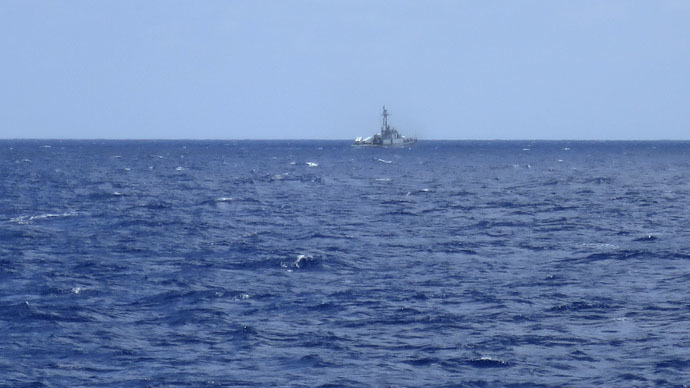China building a ‘great wall of sand’ in South China Sea– US Navy

The US has accused Beijing of "unprecedented land reclamation," claiming China is "creating a great wall of sand" over four square kilometers, in the disputed area in the South China Sea. The move has caused concerns over China’s territorial intentions.
Speaking at a naval conference in Australia, US Pacific Fleet Commander Admiral Harry Harris Jr. said China has been “pumping sand on to live coral reefs — some of them submerged — and paving over them with concrete. China has now created over 4 square kilometers (1.5 square miles) of artificial landmass."
"But what's really drawing a lot of concern in the here and now is the unprecedented land reclamation currently being conducted by China," Harris said.
Harris reminded that the region is known for its beautiful natural islands, but "in sharp contrast, China is creating a great wall of sand with dredges and bulldozers over the course of months."
Submerged reefs in the Spratlys archipelago have been turned into artificial islands with buildings, wharves and runways.
While China claims a vast majority of the sea, it still has territorial disputes with the Philippines, Vietnam, Taiwan, Brunei, and Malaysia. Earlier this month Vietnam and the Philippines filed a diplomatic protest with Beijing.
READ MORE: US Navy flies new plane over disputed South China Sea
The main concerns of US military and other regional players are about the purpose of these islands, as they could potentially be used for military and other facilities to strengthen the country’s territorial claims.
"How China proceeds will be a key indicator of whether the region is heading toward confrontation or cooperation," Harris said.
Australia is also concerned about the situation. Last year, it agreed with Japan to increase military cooperation and exercises as a hedge against China’s fast-growing military potential.
The US called all claimants to comply with the 2002 China-ASEAN Declaration of Conduct, in which the parties committed to "exercise self-restraint in the conduct of activities that would complicate or escalate disputes and affect peace and stability."
China insists its territorial claims have a historical basis and the US should not meddle in these disputes.
The US is bolstering its own military presence in the region. US navy fleet commander Harris said the United States is currently preparing to shift 60 percent of its fleet to the Pacific by 2020.












